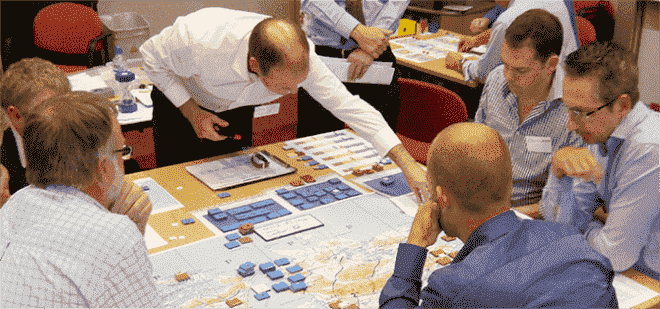Wargaming: Providing support for military intelligence analysis
Intelligence is a key element in the effectiveness of defense wargaming. From battle order and weapon system capabilities to strategy, intelligence analysis provides the factual basis for chess maneuvers. Intelligence analysts generally play the role of adversaries in what are called "red units. However, if the wargame sponsor has specific training or analysis objectives, the wargame may deviate from the closest realistic or most likely "red" course of action.
Intelligence analysts playing the red side must guess how the adversary might respond to an unusual situation or make decisions that they believe are inaccurate in order to achieve the objectives of the wargame. This is one of the reasons why analysts get frustrated and complain that wargaming is not realistic. Rather than criticizing this problem, analysts should accept this fact and make wargaming work for them.

What makes wargaming different from other structural analysis methods?
A number of structural analysis methods can be used to help intelligence analysts overcome bias and improve their assessments. Why is wargaming different/better than these methods? Wargaming allows analysts to understand the nature of the interplay of war from the adversary's perspective.
A common approach to seeing the world from the adversary's perspective is the Red Square analysis approach. In this approach, the analyst puts himself in the adversary's shoes and thinks about what factors will influence his decision making process and how to respond to different stimuli. The method has similarities to the red-squared approach of wargaming. However, the addition of an opponent with thinking and reacting skills in wargames, and the fact that the process can be repeated, greatly improves the level of the Red team.
Moreover, wargaming is able to represent the nature of war in a way that other methods cannot. It captures the interplay between actors in a conflict (including iterations of influence). In this way, it can help analysts look beyond the first-order effects of an adversary's course of action and determine the impact that different actions will have on the future actions of each party to the conflict. Wargaming can also document the temporal sequence of military operations. This helps to elucidate the constraints on military operations in a way that many abstract methods cannot.
Wargaming can facilitate the use of other analytical methods
Wargaming can help test key assumptions.
If the assessment is based on the assumption that the opposing political leaders do not believe that war is in their interest, the analyst can put himself in the shoes of those leaders in a wargaming environment to see if the assumption holds up. This assumption may not be as valid when the analyst is facing a thinking opponent in a wargame scenario.
The wargame also helps analysts choose multiple assessment methods.
Many analysts reveal that if they are under strong pressure, they may only consider alternative hypothesis options at the end of the analysis process. The sequential and iterative structure of the wargame exercise helps put different analysis scenarios in front of the analyst. Each turn of the game presents decision points to the opponents, and each decision point derives a variety of viable scenarios to consider. Based on these analysis scenarios, a wargame can indicate indications that the opponent has chosen a certain course of action.
At the same time, wargaming provides the environment to support structured brainstorming sessions.
Analysts on the same team can use this approach to determine the range of possible adversary actions and then think about which actions are supported by evidence, which actions are most likely to occur, and which actions pose the greatest threat.
In addition, wargaming helps identify intelligence gaps.
The key to developing effective analytic insights using the wargame is to incorporate intelligence information into the process whenever possible. In developing decisions during the push, the pair should ask themselves, "What intelligence reports will provide clues as to how the target will respond?" . If there is no available information, an intelligence gap has been revealed.
【Artificial Intelligence】●Advanced tips for using ChatGPT-4
【Open Source Intelligence】●10 core professional competencies for intelligence analysts
銆怬pen Source Intelligence銆戔棌5 Hacking Forums Accessible by Web Browsers
銆怤etwork Security銆戔棌9 popular malicious Chrome extensions
銆怰esources銆戔棌The 27 most popular AI Tools in 2023



